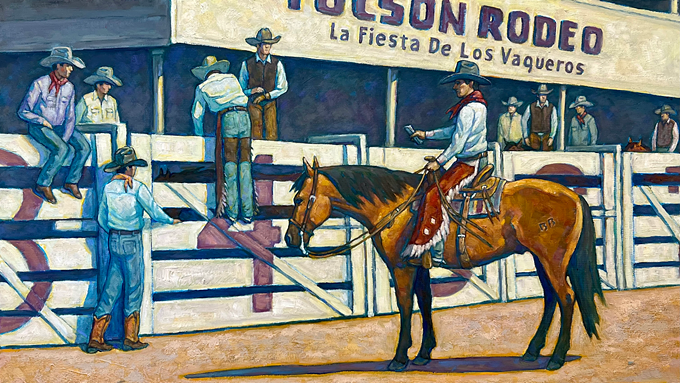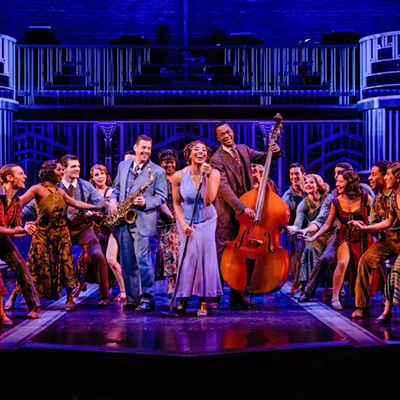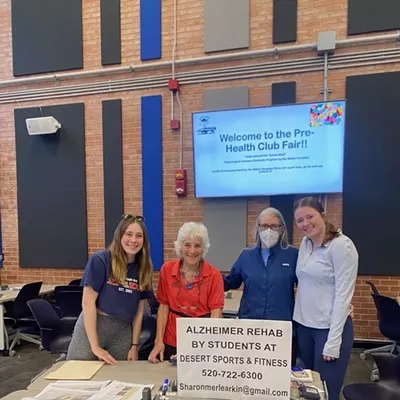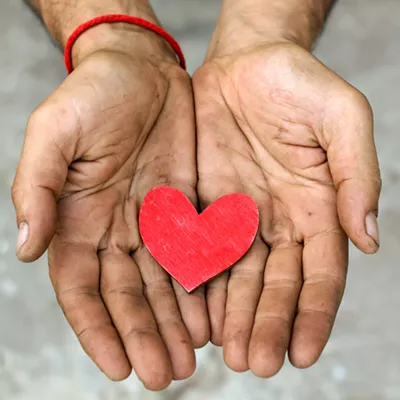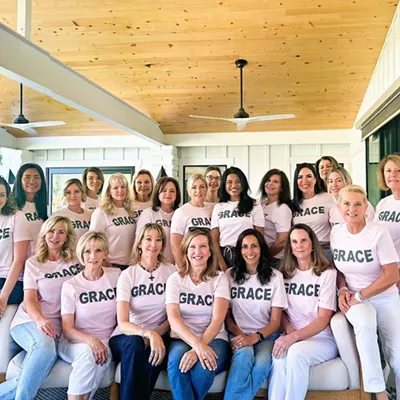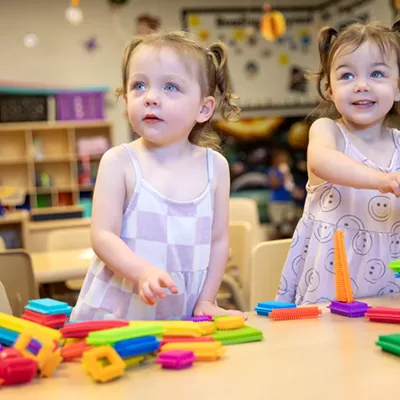When the rodeo comes to Tucson this month, it won’t just be the cowboys in the ring drawing the eye of those who love the sport. Artists will also be getting into the game.
At the Mark Sublette Medicine Man Gallery more than 100 pieces of art celebrating rodeo will be on display through Tuesday, Feb. 28. It will capture in photographs, paintings and sculptures the romance and reality of what fans will see at Tucson Rodeo “La Fiesta de los Vaqueros,” an event that is just two years shy of its centennial.
For Sublette, a 33-year Tucson resident who has run his gallery for almost as long, it’s a chance to honor a major part of his life.
He grew up in an eastern New Mexico ranching and farming community where they had a rodeo team in high school.
“I’ve always been familiar with rodeo and enjoy it — watching it, not competing,” Sublette said. “As I looked at things I had just in my own collection, I had quite a few rodeo pieces. It wasn’t because I purposely thought I should collect rodeo. It just kind of happened. I thought this would be a very interesting show. I love this stuff.”
Nor is he alone. Rodeo is part of his culture and his city.
“We’re the only major city like this that gets an entire week off for rodeo week, right?” Sublette said. “So, I thought this would be a wonderful show to try to put together some of the great early rodeo pieces.”
The group show features 38 artists from the late 1800s to today’s contemporary artists. Some were artists whom he represented and others responded to his call for submissions. It’s allowed the gallery to present a large show that covers several historic periods.
“I have some pieces that are very modern interpretations of what the rodeo and the cowboy genre lifestyle is about from almost an abstraction to some extent to very tight realism,” Sublette said.
“It turns out if you do that, you can get 100 pieces pretty quickly.”
In addition to the more than 100 pieces of artwork, Sublette said it has “rodeo ephemera.” Some of his artists, such as Billy Schenck and Howard Post, were rodeo competitors who won national and local championships. Not only did they contribute their artwork to the show, but they (and others) loaned him things such as the buckles they won from rodeos, saddles, 35 hats and 40 pairs of boots. They’ll fill the gallery, adding an authentic touch to the art that surrounds it.
“It’s an all-encompassing sense of rodeo and cowboy culture,” Sublette says.
Sublette hopes the show will broaden people’s sense of what rodeo can be.
Maeve Eichelberger’s work is one example. A Colorado native, Eichelberger takes photography, drawing, collage and hand etching to create sculptures made out of Plexiglass. She spent her early years on a ranch and has a series of work that focuses on western and urban motifs. In the Tucson show, she’ll display her Plexiglass saddles.
“She grew up on a ranch and knows horses,” Sublette says. “She’s also academically trained with a BFA and an MFA and she works in this unusual media of Plexiglass and acrylics, but makes images of things that would be used by cowboy culture, including chaps and saddles.”
Sublette said he loves placing her work next to a Charlie Russell painting.
Russell created more than 2,000 paintings and bronze sculptures of the Old West before he died in 1926. One of his works will be part of the exhibition.
“They are opposite ends of the spectrum, but they still have the same thematic approach, which is a love for the culture and the material used in the culture as far as the imagery of what takes place,” Sublette said.
Sublette said his goal with this show is to get the very best examples from different artists. In late January as he was still finalizing the list of artwork, he planned to tell a story about rodeo culture rather than arrange staging by artist.
“It is going to be set up in a form where it’s kind of telling the story of the landscape, the people, the animals and the material that are used for the rodeo—chaps, hats, boots, those kind of things,” Sublette said.
Rodeo, Sublette said, is the true American culture of the West, something he hopes people will see when they come to the exhibition. He’d like to see many of the stereotypes shattered, such as the idea that rodeo is made up of white guys on horses. He explains that probably 40% of all cowboys are people of color.
“You have this diverse group of individuals that are partaking, something that really comes from the roots of cowboys, which again, was very diverse, whether it is vaqueros or African American cowboys or white cowboys,” Sublette said. “It’s this blending of cultures, races and different ethnicities in this wonderful, coming together of testing your skills.”
Sublette issues an invitation for the public to join him in his celebration of rodeo and all that it represents.
“It’s a one-of-a-kind exhibit that’s never been done before, not just in Tucson, but nationally to my knowledge,” Sublette said.
“It encompasses everything from historic to modern interpretations of cowboy culture and the rodeos through a variety of media of bronzes, paintings and photography and ephemera as well.”
Rodeo de Tucson Exhibition and Group Show
WHEN: 10 a.m. to 5 p.m. through Tuesday, Feb. 28
WHERE: Mark Sublette Medicine Man Gallery, 6872 E. Sunrise Drive, Suite 130, Tucson
COST: Free admission
INFO: 520-722-7798, medicinemangallery.com

